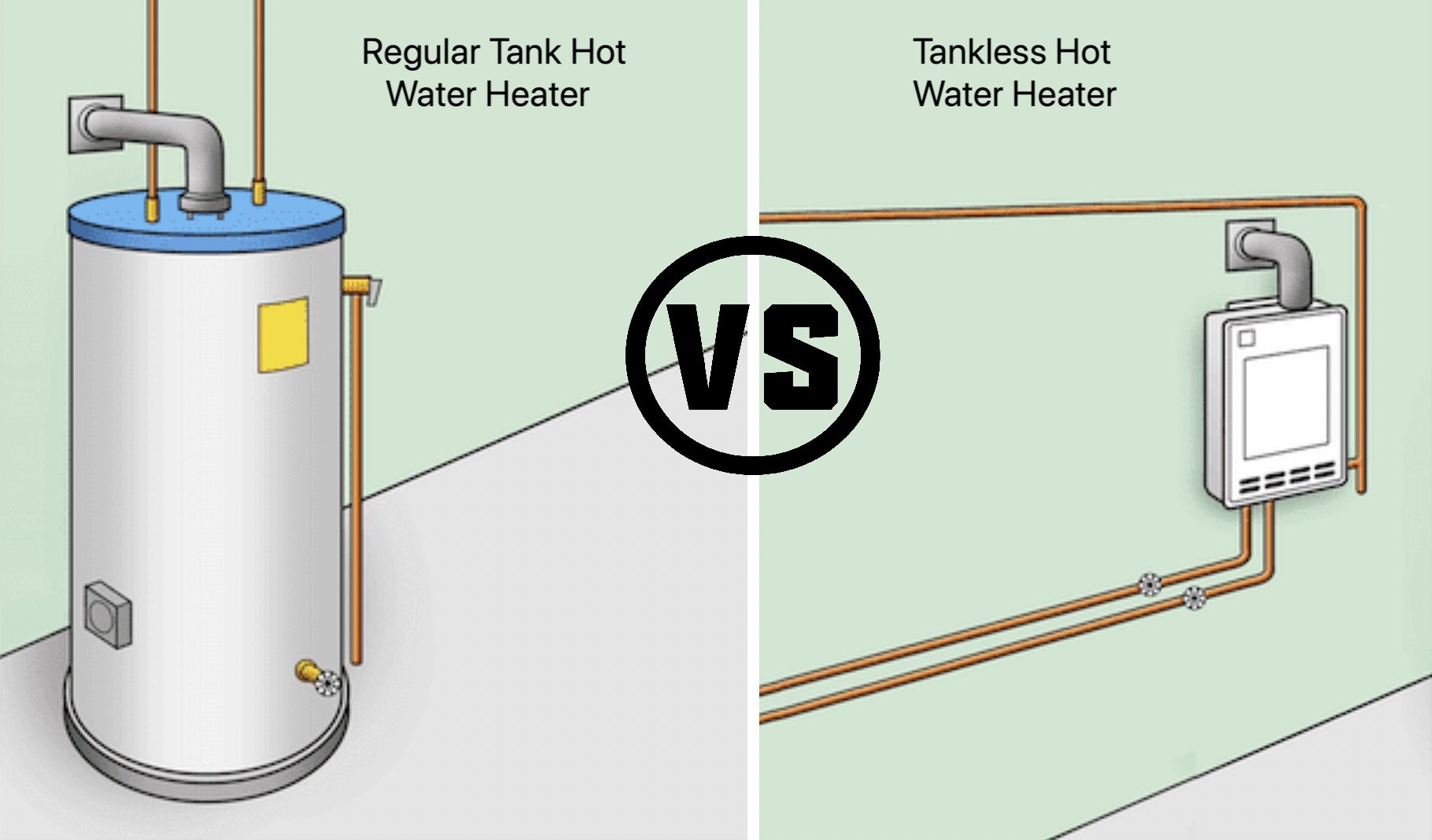A tankless water heater can be a major expense. They can cost as much as a dishwasher and are usually seen as a luxury item. However, having a good tankless hot water heater can pay dividends over the next decade!
Below I detail my experience and the pros vs. cons of buying one.
Reason for buying
Prior to purchasing our historic home, my husband and I knew that heating and cooling could be a challenge; everything from the ductless air conditioning system to the hot water heater would be different than what we had in our previous home.
Since it had to be replaced I didn’t want to just buy a newer version of the same thing. Not another clunky, metal tank that can potentially leak through the ceiling. Instead, we chose to purchase a tankless version.
At first I was skeptical that a tiny box mounted onto the wall could meet my entire home’s hot water needs. Keep in mind I have three children, which means five showers in the morning and probably an average of eight showers daily.
I was also curious to see how it impacted our electric bill since supplying real-time hot water to multiple appliances can’t be cheap.
Is a tankless water heater worth it?
For my family, it is absolutely worth it and in almost every single way.
So far the energy efficiency of a tankless water heater is way better than we had expected. The product description said it requires less energy than a normal water heater, but after doing research online I read that it can go either way.
I also read on the description that the flow of the Rinnai V65IN indoor tankless hot water heater supplies up to 6.5 gallons per min. Since the average flow rate of a shower is 2.5 gallons, this model is more than enough for two home showers running at the same time.
This winter, on average, our tankless water heater has saved us 25-30% per month on electric costs. That’s a lot for a family!
Rinnai V65IN (V Series) is also a “smart” tankless heater meaning that we can control the temp, from 98F – 140F, using our mobile phones!
Here’s a chart to compare Rinnai tankless water heater (indoor vs. outdoor) models.
Should I buy a tankless water heater?
For my home it absolutely made sense, but it might not be for everyone.
In my opinion a tankless water heater is designed for on-demand hot water and is ideal for homes with multiple people. For example in my house, having three showers running simultaneously in the morning meant that hot water was extremely limited. However if you live in an apartment or with only 1-2 people, hot water probably won’t be as much of a concern.
Also a tankless water heater can be expensive. The one we purchased cost about $500 and paid a family friend $200 to help my husband install it.
The upfront cost is hard to get around if you want a good model. There’s a lot of cheaper versions online, but the price and capacity go hand-in-hand.
Pros
Cons
Tankless hot water heater cost
According to the U.S. Environmental Protection Agency (epa.gov), showering accounts for 17% of residential indoor water use. For an average family showers use up to 40 gallons of water per day.
A typical shower has a flow rate of 2.1 gallons and uses 17.2 gallons per use. The average shower is 8.2 minutes.
To know if a tankless model is right for your home ask yourself the following questions.
- Do multiple showers run at the same time?
- Is hot water running out on a daily basis?
- How large is your current hot water tank?
- Do you have the info to calculate your current hot water costs?
- Would you save 25% or more on electricity costs by switching?
- Can you afford a $200-500 model and pay for $200-500 in install costs?
It’s important to know if a tankless water heater is somewhat necessary or a luxury expenditure.
Depending on your needs expect a tankless hot water heater to cost $400-1000 after install and $15-40 per month.
Conclusion
A tankless water heater was a good purchase for my family. It was a large upfront cost, but is a nice luxury for homes with multiple people and can save monthly electric costs.
For me, I can’t imagine going back to a tank heater model. It didn’t supply enough hot water and I there is definitely the risk of it leaking, causing more damage. There were a few times I checked on it and noticed the area around was a little damp – that’s what ultimately made us make the change.
Comparing my Rinnai tankless water heater cost vs regular tank heater, I estimate we are saving $15 to $25 per month. This means the Rinnai V65IN will pay itself off by the second year. And since it’s designed to last 10+ years I think it’s one of the better purchases we’ve made.
So for most people asking if a tankless hot water heater is worth it, in most cases I very much recommend it!




